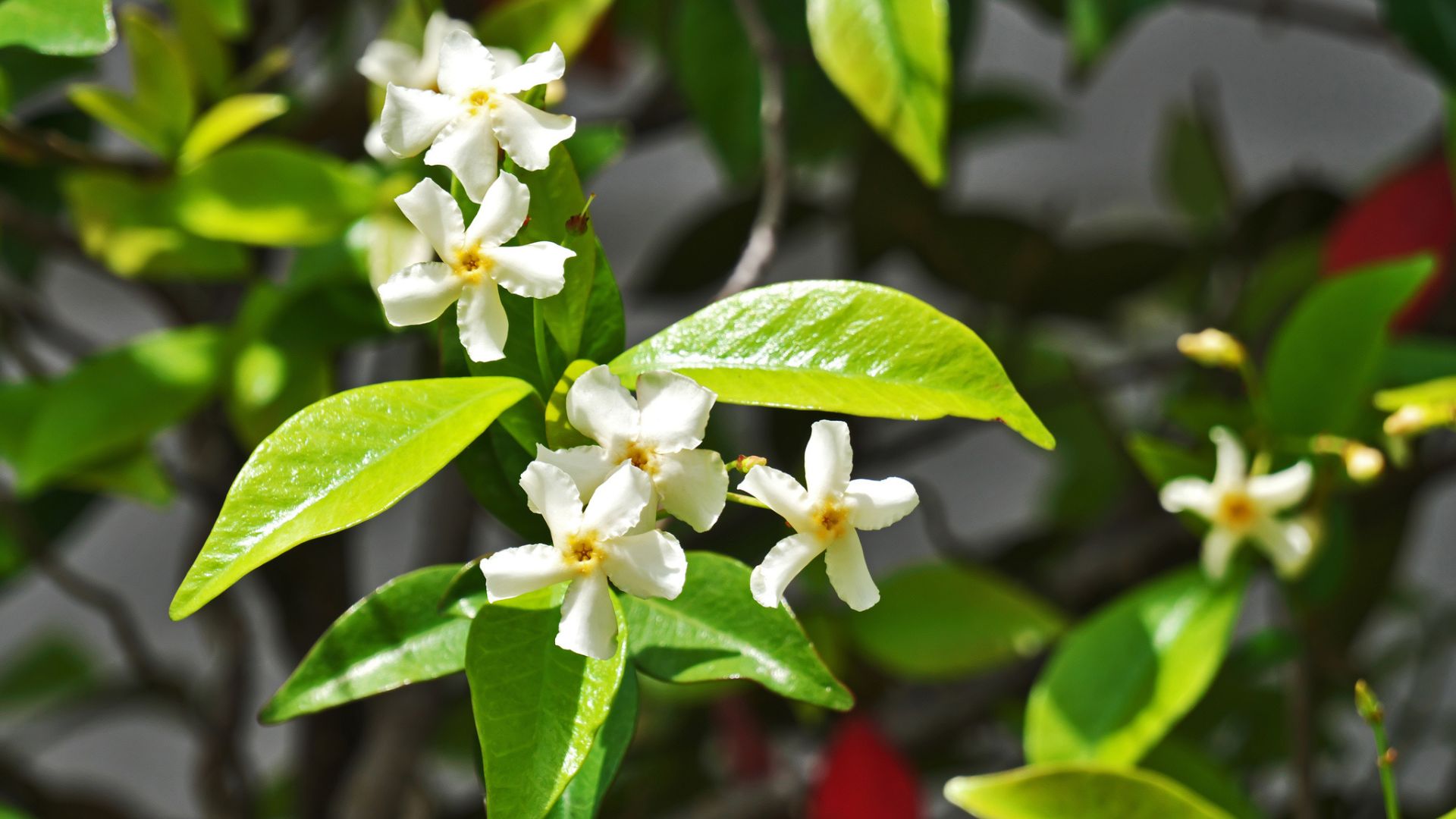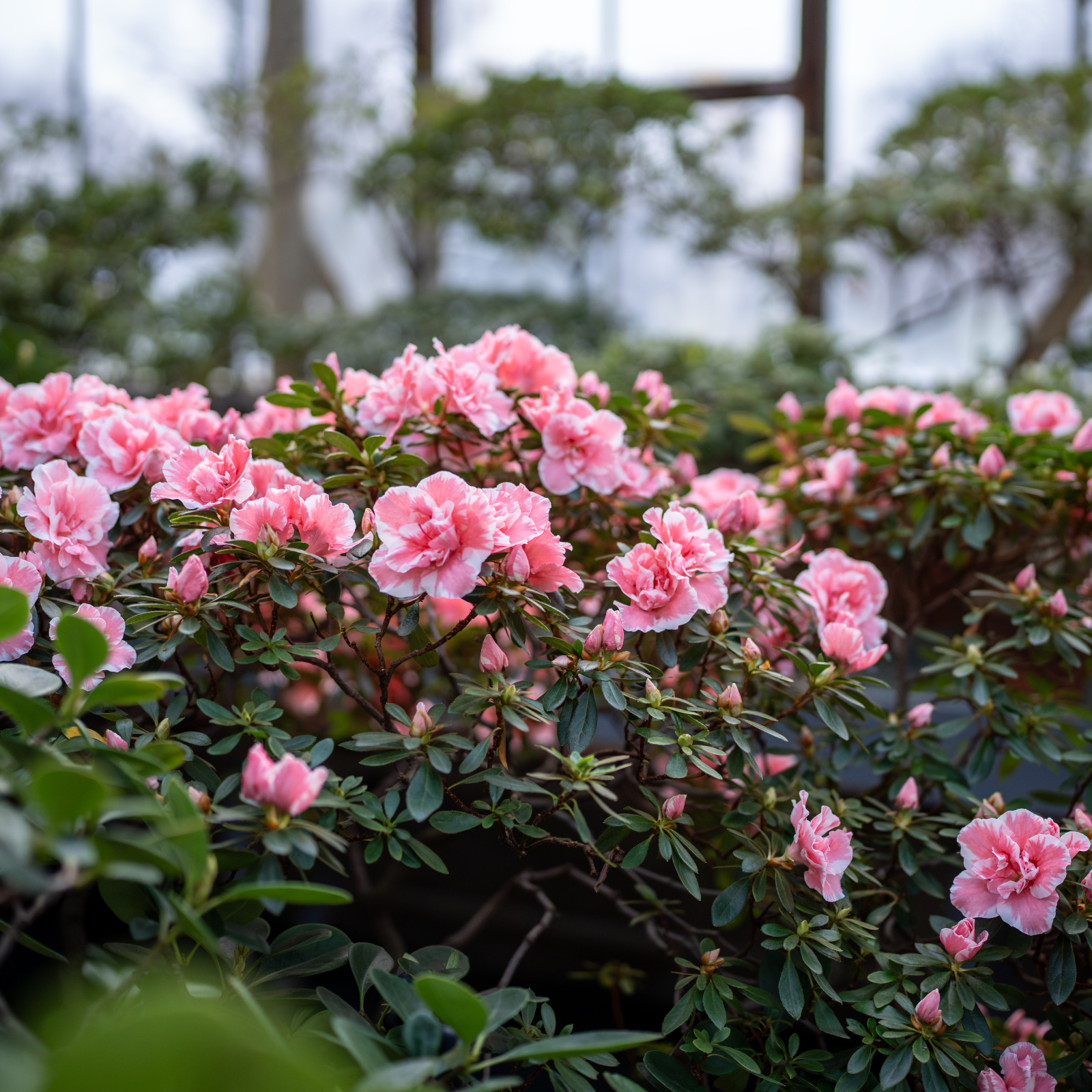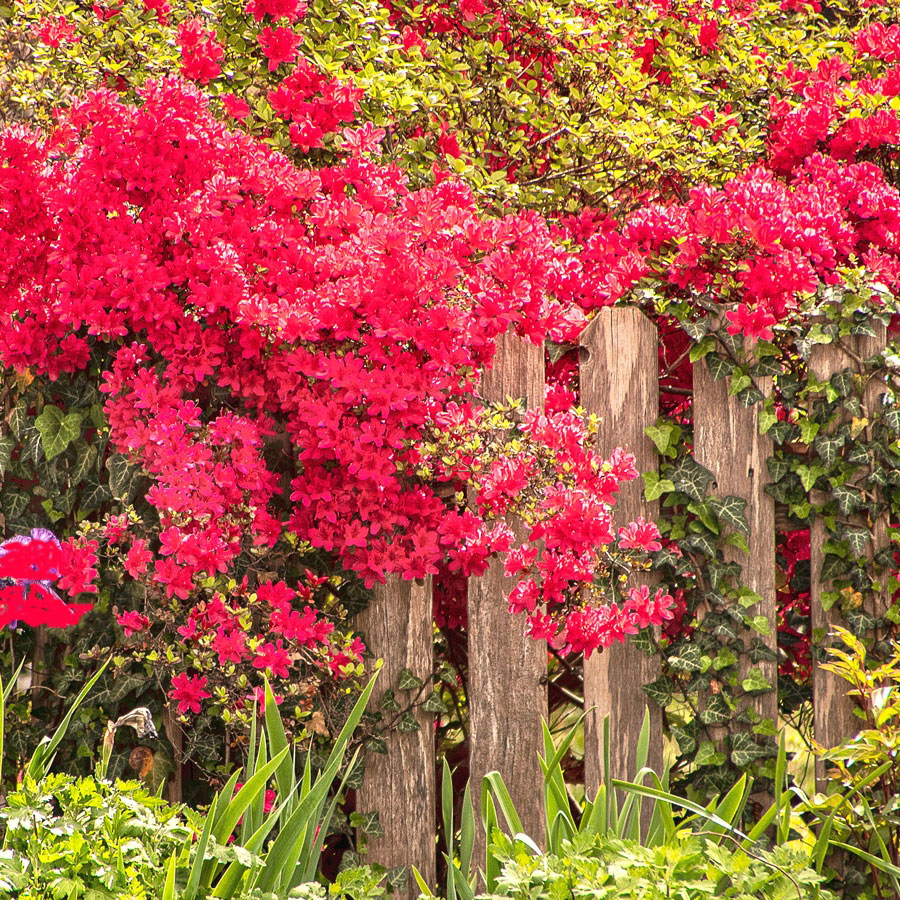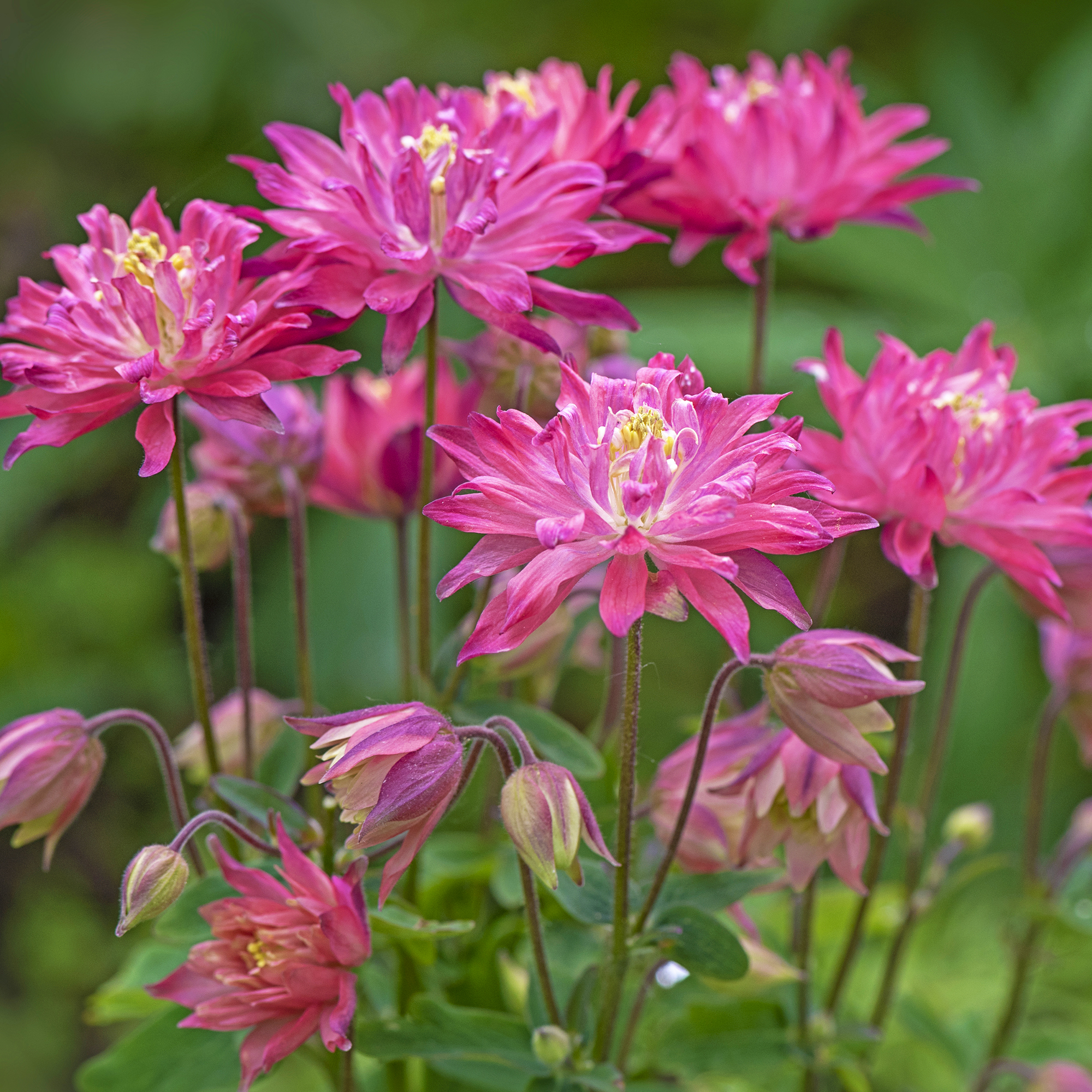Top 10 Flowering Ground Covers
Explore this short list of 10 of our favorite flowering ground covers suitable for different climates and garden styles.

Caroline Bloomfield
Do you have some spaces that need filling in? Spaces around planters, shady spots in the shadows, under a tree, spaces between stepping stones, or an oddly shaped barren spot can be challenging. Consider popping in some pretty flowering ground cover plants.
Benefits of Flowering Ground Covers
Using flowers for ground cover plants can change the entire feel of your landscape. While traditional ground covers are often overlooked and underappreciated, flowers that cover the ground can provide vibrant color and interest to areas that may otherwise look dull or be difficult to plant. Many varieties of flowering ground cover will grow and thrive in the shade under trees where other plants won't grow.
Flowering ground cover plants can also act as a low-maintenance barrier against weeds. They stabilize soil, fill in gaps between stepping stones, and provide a lush habitat for our pollinator friends.
Commonly used old-fashioned ground covers such as pachysandra and English ivy are beautiful, but why not think outside the box with an even prettier alternative that's just as hardy and tough?
Flowers that cover the ground provide all the same benefits in addition to adding color and pollinators to your growing spaces. Even when they aren't in their flowering season, evergreen varieties of ground-covering flowers can provide interest year-round.
Fabulous Flowering Ground Cover Plants
Enjoy this short list of 10 of our favorite flowering ground covers (plus one additional honorable mention). Happy planting.
1. Creeping Phlox

Creeping Phlox (Phlox subulata) - This pretty plant loves full sun and provides a thick mass of carpet-like foliage. It becomes completely completely covered in early spring with a profusion of blooms. Well-drained, sandy soil is a must for this ground cover flower. Grows best in USDA zones 3-9.
Gardening tips, videos, info and more delivered right to your inbox!
Sign up for the Gardening Know How newsletter today and receive a free copy of our e-book "How to Grow Delicious Tomatoes".
2. Bugleweed

Bugleweed (Ajuga reptans) - Bugleweed is an evergreen that can thrive in the shade of large trees. It showcases small spikes of pretty blue or pink flowers that stand above the spreading foliage in spring. Plus, its foliage is colorful and attractive all year long. Be aware that it does tend to become an aggressive spreader. Thrives in USDA zones 4-9.
3. Catmint

Catmint (Nepeta) - Catmint is a great choice if you're looking for season-long blooms and minty aromatic foliage. It grows in short clumps and is a perennial, so just plant it once. It blooms most of the summer, and is not at all liked by deer and rabbits. They are repelled by its fragrance. Best in USDA zones 3-8.
4. Coral Bells

Coral Bells (Heuchera) - Although this flowering ground cover plant is grown more often for its beautiful foliage, its dainty little flowers bloom for a long time during the summer months. The flowers may be small, but this evergreen to semi-evergreen perennial is available in a wide array of foliage colors, shapes, and sizes including green, yellow, purple, and some that even change throughout the season. It more than makes up for its lack of splashy flowers. Hardy in USDA zones 4-9.
5. Creeping Thyme

Creeping Thyme (Thymus serpyllum) Creeping thyme is one of our favorite sun-loving perennial groundcover flowers. An aromatic herb, it's the perfect little filler between stepping stones and patio pavers. The tiny magenta to purple flowers bloom in profusion early in the summer atop its low-growing, dense mat of green foliage. Go ahead and step on it, and enjoy the waft of fresh herbaceous fragrance. It is hardy in USDA zones 4-9.
6. Lilyturf

Lilyturf (Liriope muscari) - Lilyturf is a short clumping ornamental grass with unique, wide, dark green strappy leaves. It produces delightful purple flowers that almost resemble grape hyacinths in late summer. Lilyturf is not picky about sun or soil, and is perfect along paths and walkways, or planted en masse in landscape beds. One of the best ground flowering ground covers for super weed suppression, it can become invasive in certain areas like the southeast U.S. It thrives in USDA zones 6-10.
7. Barrenwort

Barrenwort (Epimedium) - Here's a ground covering with flowers that can thrive under the shadiest of conditions. With pretty heart-shaped flowers that float above the foliage, its ability to grow and thrive under the canopy of large shade trees makes it superior to other ground covers. With delicate flowers that have been called fairy wings, this is the perfect go-to for problematic shady spots. Best in USDA zones 5-8.
8. Carnations/Pinks

Carnations/Pinks (Dianthus) - Who doesn't love the spicy delicious scent of carnations? This vigorous, heat-tolerant, clump-forming plant packs a blooming punch with fragrant flowers available in an array of colors ranging from pinks to reds, whites, lavenders, and even bicolors. The grass-like foliage is bluish-gray and also fragrant when brushed. It only needs a bit of morning sun and some well-draining fertile soil. Best grown in USDA zones 5-9.
9. Ice Plant

Ice Plant (Delosperma) - Ice plant blooms are so prolific they cover their foliage completely from late spring through early summer. The flower colors are bright and tropical. Choose this perennial for rock gardens, slopes, or in landscaped areas that are extremely well-drained and dry. (Note: Delosperma is highly invasive in some parts of the US. Check with your local extension office before planting it). Hardy in USDA Zones 4-8.
10. Asian Star Jasmine

Asian Star Jasmine (Trachelospermum asiaticum) - Let this vigorous twining vine grow in front of a border or crawl over banks and slopes. An excellent flower for ground coverage, it bears small beautifully fragrant creamy yellow flowers from late spring to summer and thrives in full sun to partial shade. Star jasmine grows quickly and will also climb upwards if given strong support from a fence, trellis or arbor. Hardy in USDA zones 7-9.
Honorable Mention - Bunchberry

Bunchberry(Cornus canadensis) is a member of the Dogwood family is best grown in colder regions in a shady, woodland setting. Its deeply veined, rich green leaves are accented by showy white dogwood-type flowers in late spring. Bunchberry is a good choice to edge a shady garden, for naturalized areas or to plant beneath evergreen or deciduous shrubs and trees. It loves cool, damp, acidic places like woodland gardens or even a forest floor.

Amy Draiss, Digital Community Manager at Gardening Know How since 2021, seamlessly blends her hands-on gardening experience with a digital green thumb. With roots in family landscaping and management at a garden center, Amy has cultivated expertise in plants, supplies, and customer relations. Residing in the Midwest, Amy tends to her two-acre haven, showcasing a diverse range of trees, shrubs, and perennials. As the Hydrangea Queen, she shares her love for these blooms and imparts gardening wisdom through videos and social media. Beyond gardening, Amy enjoys quality time with her family, travel, and theme parks. Amy's mission is to inspire and advise plant enthusiasts, fostering flourishing gardens for both seasoned and budding gardeners alike.
- Caroline BloomfieldManager of Marketing Communications
-
 Moody Blooms For Spring: 8 Types Of Black Flowers To Add Drama To Spring Displays
Moody Blooms For Spring: 8 Types Of Black Flowers To Add Drama To Spring DisplaysFrom midnight burgundies to inky violets, several types of black flowers can enrich and embolden a spring display. Try these brooding bloomers for a moody garden
By Tonya Barnett
-
 Can Snake Plants Live Outside? Everything You Need To Know For Snake Plants Al Fresco
Can Snake Plants Live Outside? Everything You Need To Know For Snake Plants Al FrescoSnake plants can live outside given the right conditions, but be careful that they don't take over! Learn the best way to use snake plants in your landscape.
By Mary Ellen Ellis
-
 Zinnias On Repeat: 10 Glorious Cut-And-Come-Again Varieties For Endless Summer Bouquets
Zinnias On Repeat: 10 Glorious Cut-And-Come-Again Varieties For Endless Summer BouquetsThese zinnia varieties keep giving all summer, making them the perfect choice for dedicated cutting gardens – or just the occasional homegrown bouquet.
By Ellen Wells
-
 What Is The Size Of An Azalea? Explore Different Varieties That Will Suit Every Garden
What Is The Size Of An Azalea? Explore Different Varieties That Will Suit Every GardenThe size of azaleas can vary widely because they have been selectively bred for different landscape needs. Check out our picks for each size category.
By Mary Ellen Ellis
-
 5 Fabulous Fast-Growing Vines – That Will Quickly Climb Any Arbor, Trellis, Or Fence
5 Fabulous Fast-Growing Vines – That Will Quickly Climb Any Arbor, Trellis, Or FenceThese fast growing vines are perfect for covering any eyesores in your yard or creating a living fence. They will provide great visual interest, as well.
By Amy Grant
-
 When To Plant Roses: The Best Time For Your Climate And Rose Type
When To Plant Roses: The Best Time For Your Climate And Rose TypePlant your roses at the right time and you will be rewarded with decades of glorious summer flowers – but get it wrong and you'll be crying over dead shrubs.
By Teo Spengler
-
 Spectacular Early Blooming Shrubs: 6 Sparkling Spring Flowering Bushes
Spectacular Early Blooming Shrubs: 6 Sparkling Spring Flowering BushesWant to kickstart your gardening year with dazzling spring flowering bushes for beds and borders? These unique early bloomers are sure to help you rise and shine!
By Teo Spengler
-
 7 Shade-Loving Flowers To Start From Seed Now For A Stunning Summer Garden
7 Shade-Loving Flowers To Start From Seed Now For A Stunning Summer GardenTurn shady spots into vibrant new garden spaces with lovely and illuminating shade-loving flowers.
By Ellen Wells
-
 7 Summer-Blooming Bulbs To Plant In Early Spring: Don't Miss Months Of Glorious Flowers!
7 Summer-Blooming Bulbs To Plant In Early Spring: Don't Miss Months Of Glorious Flowers!Get a head start on stunning summer blooms with these easy-to-plant bulbs – act early and you will enjoy vibrant flowers that last for months on end.
By Mary Ellen Ellis
-
 Quick Fire Hydrangea – The Elegant, Easy-Care Shrub Every Gardener Needs In Their Landscape
Quick Fire Hydrangea – The Elegant, Easy-Care Shrub Every Gardener Needs In Their LandscapeIf you’re after an early flowering panicle hydrangea that offers plenty of floral variety, the Quick Fire hydrangea goes big on visual dynamics from early summer to fall
By Tonya Barnett